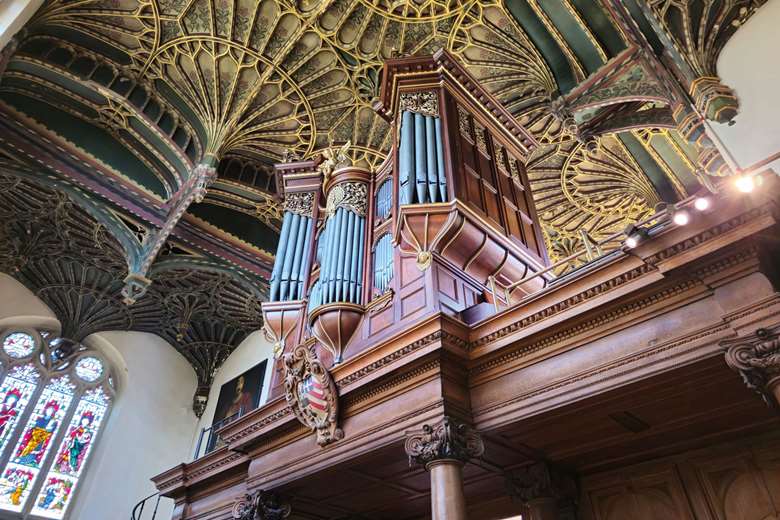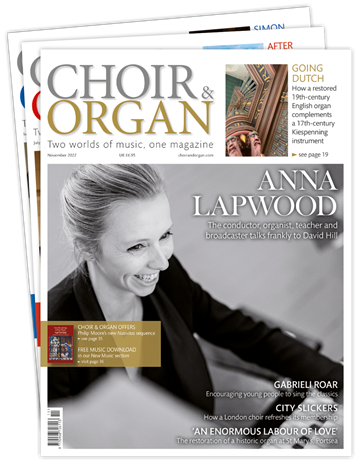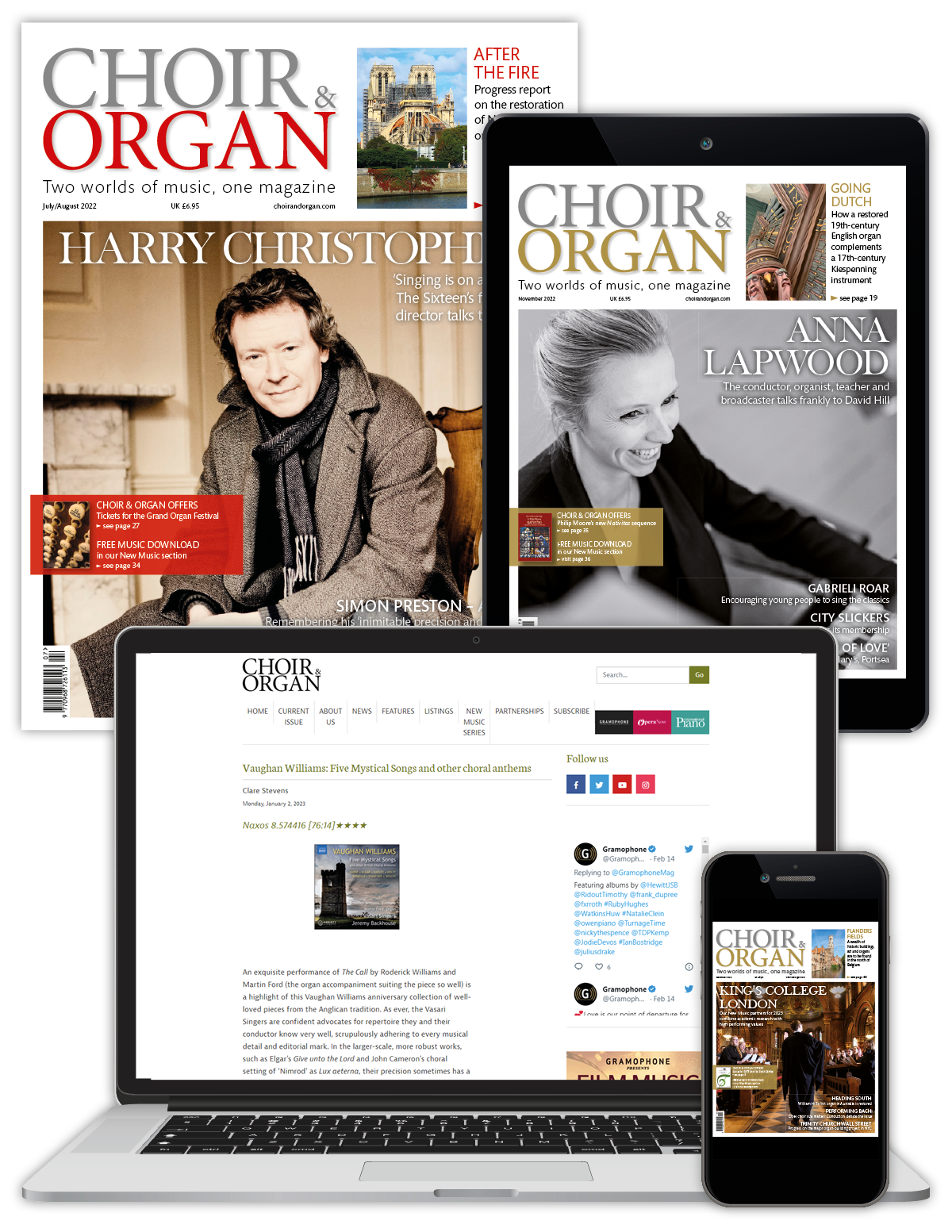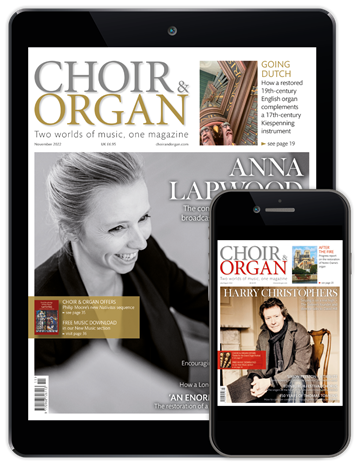A first-look at the new organ in the Brasenose Chapel
Nicholas Prozzillo
Friday, February 21, 2025
Orgues De Facto, the Belgian organ builder established in 2021, overcomes limitations of space with a new instrument informed by 19th-century style. Nicholas Prozzillo reports. Photos by Andrew Sillett

The Brasenose Chapel, dedicated to St Hugh and St Chad, represents a ‘perplexing, intriguingly hybrid style’. Standing within The King’s Hall and College of Brasenose, Oxford, the T-shaped chapel was consecrated in 1666, a time when few religious buildings were constructed. The chapel was financed by men on both sides of the Civil War; thus loyalty to Brasenose surpassed other interests. Financial considerations were responsible for other interesting features. The chapel’s hammer beam ceiling was taken from the former Augustinian abbey of St Mary, built in the 1440s and demolished in 1656. But aesthetic considerations dictated that architecture conform to the ideal of the day and the roof was ingeniously concealed by plaster and wood fan vaulting (painted in the 1890s). Thus within the Brasenose Chapel the ‘survival of Gothic and the importation of Baroque’ coexist in harmony.1
Perhaps it was this clever juxtaposition of styles (a fascination with the past?) which, in 1892, inspired the creation of the present Baroque fantasy case to accommodate an organ. The college’s principal, Charles Heberden, a classicist and the college organist, provided the funds; Sir Thomas Jackson designed the case; and Thomas Hill built the organ. An inscription within the case reads ‘This Casing was Fixed, October 1892’. The case is a feast for the eyes. Peacocks and swans stand proudly within the pipe shades with a cherub sitting in the middle playing the violin. The structure of the eastern pedal towers, perhaps, hints at the works of G Silbermann. A trumpeting angel makes for a triumphant west front. But measuring just 2.75m by 1.83m, and having a depth of 1.83m, the sumptuous case, perhaps, caused some difficulties to accommodate and maintain the 12-stop organ – it certainly challenged later organ builders.
By the 1970s Brasenose was ready for change. It was, in fact, one of the first colleges to admit women. A few years earlier, when new accommodation was required, the bursar decided on a bold statement of modernity. Commonly referred to now as the ‘car park’, the new staircases were designed by two of Britain’s most significant post-war architects, Philip Powell and Hidalgo Moya.

Change was also desired in the organ loft; after all, the UK’s musical landscape had developed. A growing interest in the past, specifically concerned in elevating historical evidence as a form of authority to unprecedented levels, allowed the English organ to appear to be at odds with the emerging aesthetic of what we now know as the early music revival. The learned Oxbridge environment provided a good laboratory. In 1969, the music journalist Basil Ramsey, in referring especially to the arrival of the new organs at The Queen’s College and New College, advanced that ‘British universities are in the vanguard of the organ reform movement.’2 Brasenose desired a new organ. The then principal, Maurice Platnauer, another classicist, bequeathed £20,000; James Dalton, who was responsible for the installation of the 1965 Frobenius organ at The Queen’s College, assisted Brasenose. Dalton asked Frobenius to quote for a new organ within the existing case but such was the influence of the Revd Leslie Styler, chaplain, that the college settled with the chaplain’s candidate, Peter Collins.3 Initial discussions included a new organ case, but some college officials stipulated that the case be kept.
The new organ of 1973 was one of the early exploratory essays in a reformed style. It included standard German components, aluminium pallets, and pipes with open feet and little or no nicking. The scheme was adventurous in its desire to accommodate a three-manual organ within the original case. Maintenance was a challenge. The pipework was so tightly planted that speech and tuning were also compromised, something noted by Dirk Flentrop. The wooden pedal reeds were exchanged for metal ones, and some pipework was later transposed. Eventually the organ was rebuilt by Richard Bower, who altered the layout, provided a new mechanism and console and some new stops, and reset the open-foot voicing. This instrument has now been accommodated elsewhere.
With increased musical activity in the first two decades of the new millennium, the college was ready to welcome a new instrument. It was the vision of the former director of music, Christian Wilson, who placed the idea of an entirely new organ on a firm footing. Dr William McVicker was appointed as the consultant, and a brief was prepared to guide four potential contractors. It described:
➤ A return to the spirit of the original Hill organ in an appropriate Romantic style
➤ Mechanical action throughout, providing excellent tactile response for the technical development of organ scholars at the college
➤ Two manualiter divisions
➤ At least 58-note key-compass and 30-note pedals
➤ Able to accompany the choral repertoire, with sufficient foundation stops in the Swell Organ
➤ A specification with chorus work and reed(s) capable of leading a full chapel
➤ Sufficient colour stops to enable a wide range of organ repertory to be performed
➤ It is imperative that the instrument have excellent internal access via well-constructed ladders and walkways which allow for ease of tuning and maintenance.
The brief provided an interesting challenge to builders in addressing how to accommodate such an instrument within Jackson’s case. One way was to return to the spirit of Hill’s organ and, indeed, the specification provided by Orgues De Facto is similar to that of the original instrument. The new specification was chosen in tandem with the realignment of the organ’s internal layout: the soundboards now run north-south allowing the sound to project into the chapel. Health & Safety was addressed via the building of a second staircase. The console is elegant and uncluttered; the case has been restored to full magnificence.
The organ, one of the first to be built by De Facto, suggests a view – one repeatedly called for by Stephen Bicknell – that the quality of an organ depends on its integrity of style.4 It therefore considers some of the issues debated in these pages and presents the player and listener with a singular vision. And that vision is based on a late 19th-century tonal palette, with references to Willis, Lewis and Hill. Aspects of 19th-century thinking are seen in other areas. The terrace stop layout is reminiscent of some 19th-century English (and Belgian) consoles. The organ employs flexible winding, even if it might take some by surprise in, say, the crescendo introduction to Stanford in A.

Hymns and psalm accompaniments demonstrate the organ well. Strong chorus work appears alongside colour stops. The Great Organ is headed by a very confident Open Diapason with ascendency. The sound of the Pedal Bourdon is large, particularly the bottom few notes. The Swell chorus is based on a Geigen Diapason, leading powerful and bright chorus members. (The Fifteenth gives the impression of a mixture). The organ also introduces new sounds to Oxford. The Swell has a capped Walhorn, with a hint of Cor Anglais aiming to fulfil the role of both chorus and solo reed; the Gamba has an abundance of fizz and harmonic development. The flutes deserve mention. The Hohl Flute is mellow, with a touch of harmonic development; the Harmonic Flute nods to France. Coalescence works well with the Swell foundation stops. The Swell strings hint at the shimmer found in Hill’s strings.
Flexibility is increased by octave/sub-octave couplers (not for noise); by making five Great registers available on the Pedal division; and by extending the Swell reed to provide a Bassoon for the Pedal. The organ which, on paper, looks modest, proves to have many possibilities, all awaiting the imaginative mind. The Swell box also has shutters on the west side, allowing the Swell to take advantage of the ante-chapel’s slightly more resonant space.
In short, the organ is not an example of an instrument that could have existed in late 19th-century England, but rather one that seeks to learn from some of the master builders. The fourth organ to inhabit Jackson’s Baroque fantasy case supports Peter Williams’s hope that the future of the organ lies in understanding the past.5 Williams would undoubtedly have had other ideas for this intriguing chapel. Nevertheless the new Brasenose organ harks to past sounds, using them in imaginative ways.
References
1 J Mordaunt Crook, Brasenose (Oxford, 2008).
2 Basil Ramsey, ‘New College Oxford’, Musical Times, 110 (July 1969), 778-779.
3 John Rowntree, The development of ‘classical principles’ in organ building in Britain in the twentieth century, University of Southampton, 1984, 192.
4 See, for example, Stephen Bicknell, ‘Raising the tone’, Choir & Organ (May/June 1997).
5 Peter Williams, A New History of the Organ (London, 1980), 208-11.
Thanks to Edward Howell, Richard Moore, William McVicker and Christian Wilson for assistance in the preparation of this article
Nicholas Stefano Prozzillo is director of music at St Giles’ Church, Oxford






